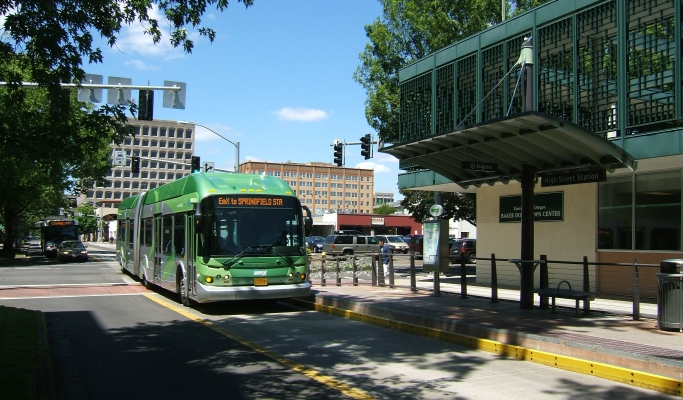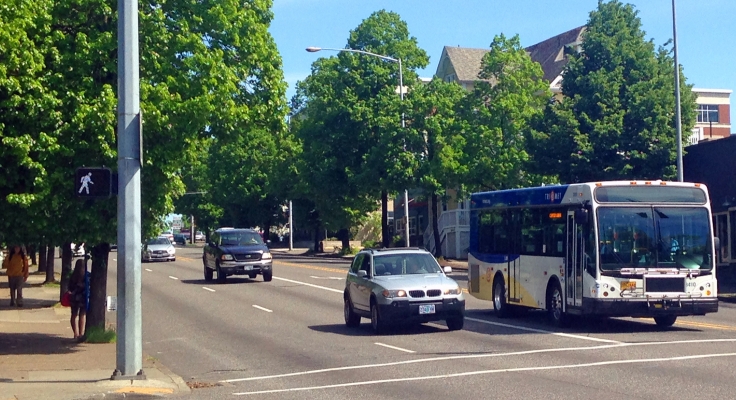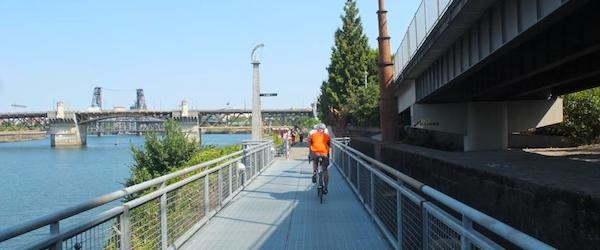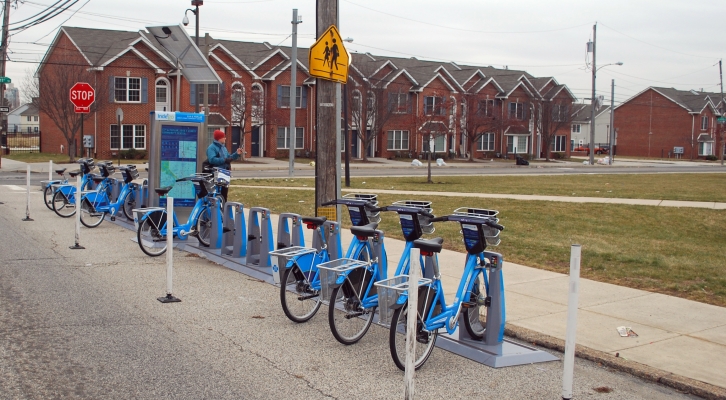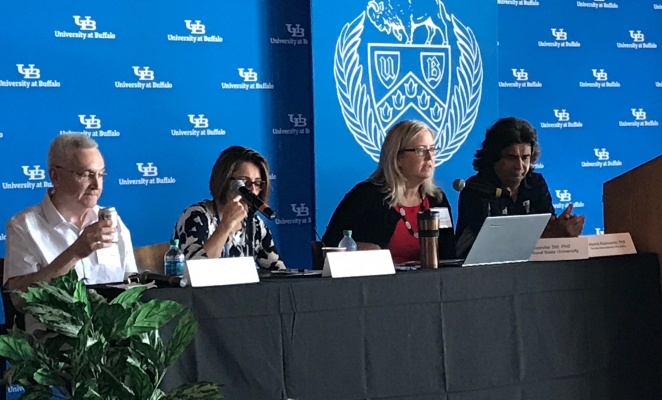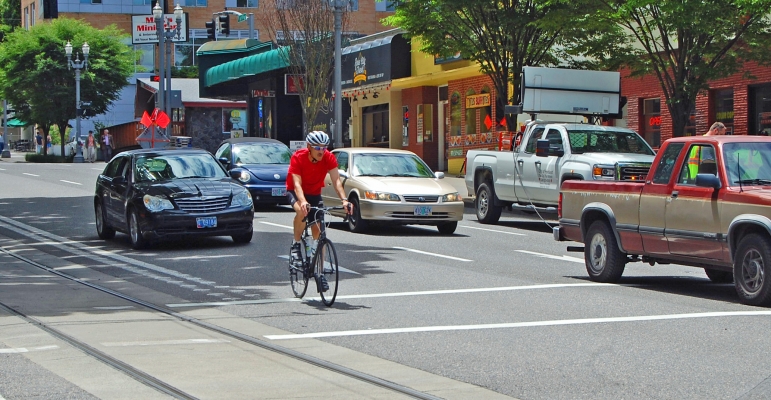What do we know about Location Affordability in U.S. Shrinking Cities?
RESEARCH IMPACT: 2019 UPDATE
This research led the Department of Housing and Urban Development (HUD) to rethink the way they use their Location Affordability Index (LAI).
"Dr. Ganning’s thorough and convincing analysis of the strengths and weaknesses of the Location Affordability Index led HUD to rethink using Census block groups as the geographical unit of analysis. As a result, Version 3 of the Location Affordability Index (published in April 2019) was generated at the Census tract level, addressing multiple data and methodological problems identified by Dr. Ganning in her 2017 article," said Josh Geyer, Office of Environment and Energy, High-Performance Buildings Team, U.S. Department of Housing and Urban Development.
Joanna Ganning, Cleveland State University | Keith Bartholomew, University of Utah | J. Rosie Tighe, Cleveland State University
- Final Report
- ...
A new NITC report examines the property value impacts of Lane Transit District’s Emerald Express (EmX), a Bus Rapid Transit, or BRT, system that connects downtown Eugene to Springfield, Oregon.
BRT is often seen as an economically powerful transit option, providing high-speed service with a generally lower price tag than a light rail system. It seems intuitive that a location-efficient area, with transportation access boosted by BRT, would be an economically desirable place to live; offering access to jobs, shopping and other destinations. Little research, however, has been done recently in the United States examining to what extent BRT affects property values.
The goal of the latest NITC study, led by Victoria Perk and Martin Catalá of the Center for Urban Transportation Research at the University of South Florida in partnership with Lane Transit District and the Florida Department of Transportation,...
Read moreThe National Institute for Transportation and Communities program (NITC) has selected its latest round of general research projects. The NITC executive committee chose to fund six projects out of the 22 proposals submitted.
The new projects feature principal investigators from five of NITC’s partner schools: the University of Arizona, the University of Oregon, the Oregon Institute of Technology, Portland State University and the University of Utah. Two projects involve collaboration between universities.
Each of the selected proposals advances NITC’s core theme of improving mobility of people and goods to build strong communities:
- Updating and Expanding LRT/BRT/SCT/CRT Data and Analysis; Arthur C. Nelson (University of Arizona)
- Life-space mobility and aging in place; Ivis Garcia Zambrana (University of Utah)
- Understanding Factors Affecting Arterial Reliability Performance Metrics; Avinash Unnikrishnan and Sirisha Kothuri (Portland State University)
- Planning in gateway and amenity communities: understanding unique challenges associated with transportation, mobility, and access to opportunity; Danya Rumore (University of Utah) and Philip Stoker (University of...
Also check out this series of articles about the project from our partners at Better Bike Share Partnership:
- Researchers investigate where to look next in bike share studies
- Study from Portland shows untapped potential for bike share
- Bike share study shows need for infrastructure is clearer than ever
- Study looks at price and incentives to get low-income residents on bike share
Evidence has...
Read moreThe Council of University Transportation Centers (CUTC) held its 2017 annual Summer Meeting June 19–21 in Buffalo, New York.
The annual meeting draws the nation’s leading transportation professionals from academia and industry, along with U.S. DOT and other transportation agency officials. The event serves as a venue to exchange information and enhance collaboration between university transportation centers (UTCs). UTCs are research consortiums based at universities and focused on transportation topics. The UTC at Portland State University managed by TREC is the National Insitute of Transportation and Communities, or NITC.
Jennifer Dill, the director of TREC and NITC, attended the meeting this week along with associate director Hau Hagedorn and research and education program administrator Eva-Maria Muecke. Dill spoke on a panel about UTC operations with fellow UTC directors Atorod Azizinamini of Florida International University and Denver Tolliver of North Dakota State University. The panel was moderated by Lily Elefteriadou, director of the University of Florida Transportation Institute.
The panel members outlined the structure of their UTC and addressed a range of questions about how a UTC operates. Topics included how to collaborate and obtain match...
Read morePsychology teaches us that implicit biases—attitudes we hold on a level below consciousness, and may not even be aware of—can have a heavy influence on split-second decisions.
In a fast-paced activity like driving, with a lot of moving parts in a complex environment, we make those snap decisions all the time. There are obvious safety implications to this, particularly for the most vulnerable road users. That’s why TREC researchers are becoming more and more interested in studying implicit bias and social psychology as it relates to transportation behavior.
The latest report from the NITC program, Exploring Drivers’ Attitudes and Behaviors toward Bicyclists: The Effect of Explicit and Implicit Attitudes on Self-Reported Safety Behaviors, is a dissertation by NITC fellow Tara Goddard.
With a focus on driver-cyclist interactions, Goddard dives into the social psychology of roadway interactions and comes up with some interesting takeaways for practitioners and researchers. Before moving to Portland in 2011 to begin her Ph.D., Goddard was the bicycle/pedestrian coordinator for the City of Davis, California, and says that it’s important to understand the mechanisms at...
Read moreA NITC study took a look at how metropolitan planning organizations, or MPOs, can better serve transportation-disadvantaged and historically marginalized populations when creating regional transportation plans.
The transportation disadvantaged are those unable to drive or who lack access to an automobile, and may include the elderly, low income, young people, persons with disabilities, and those with permanent or temporary health conditions. Historically marginalized communities are often left out of the planning process and include many of the same groups but also ethnic and racial minorities.
A new freeway, with all its attendant air and noise pollution, might cut through a part of town where low-income and minority populations are concentrated. Bike lanes sometimes wait to make an appearance until a neighborhood has begun to gentrify. People over the age of 60, as well as people of color, are at greater risk of being killed by a car while walking. Low-income neighborhoods often have poor access to regional transportation networks, making getting to and from work and other destinations a challenge for residents. English language proficiency is a barrier to participating in the transportation planning process and is also recognized as a dimension of transportation disadvantage.
To address problems like this, equity needs to be a priority in every regional transportation planning process. The report, ...
Read moreWhile it’s generally accepted that dense, mixed-use development promotes active travel, researchers don’t have a consensus on exactly how, and to what degree, land use determines people’s travel patterns.
NITC’s latest report, Active Travel Behavior and Spatial-Temporal Land Use Mixing, provides some clarity on the topic.
NITC fellow Steven Gehrke focused his dissertation research on transportation-land use interaction, and sees land use mix as a multidimensional construct.
“We can refocus—away from increasing density—and think more about how we configure land uses,” Gehrke said.
According to Gehrke’s research, more density does not necessarily equal more walking. Rather, the complementarity, composition, and configuration of land use types is essential for cultivating walkability.
Gehrke, who graduates this spring with a Ph.D. in civil and environmental engineering from Portland State University, conducted three empirical studies under his dissertation grant. The first focused on improving measurements of land use mix, introducing a land use mix measurement of the composition and configuration of local land use types.
The second study looked at other smart growth principles, like employment concentration and pedestrian-...
Read moreNITC, through the Oregon Tech ITE Student Chapter, partnered with the ASCE/AGC Student Chapters to work with middle/high school students from the Klamath Basin in the design and construction of a pedestrian trail bridge near the Oregon Tech campus. See below for full story by Samantha Tipler, Klamath County School District.
Oregon Tech has linked up with Lost River Jr./Sr. High School to build bridges – both metaphorical and actual – between the two schools. Since March 17, the Oregon Tech Student Chapter of ASCE-AGC have been working with the Lost River STEM Club to design and build a bridge on the Oregon Tech trail up to the “O” near the solar power array on campus.OTBridge2017
“You wouldn’t think a couple seventh graders would be much help to make a big old bridge,” said Dustyn Verley, 13, “but it makes us pretty proud, I’d say.” Dystyn said that after helping pour concrete into wood forms on Friday, May...
Read more
